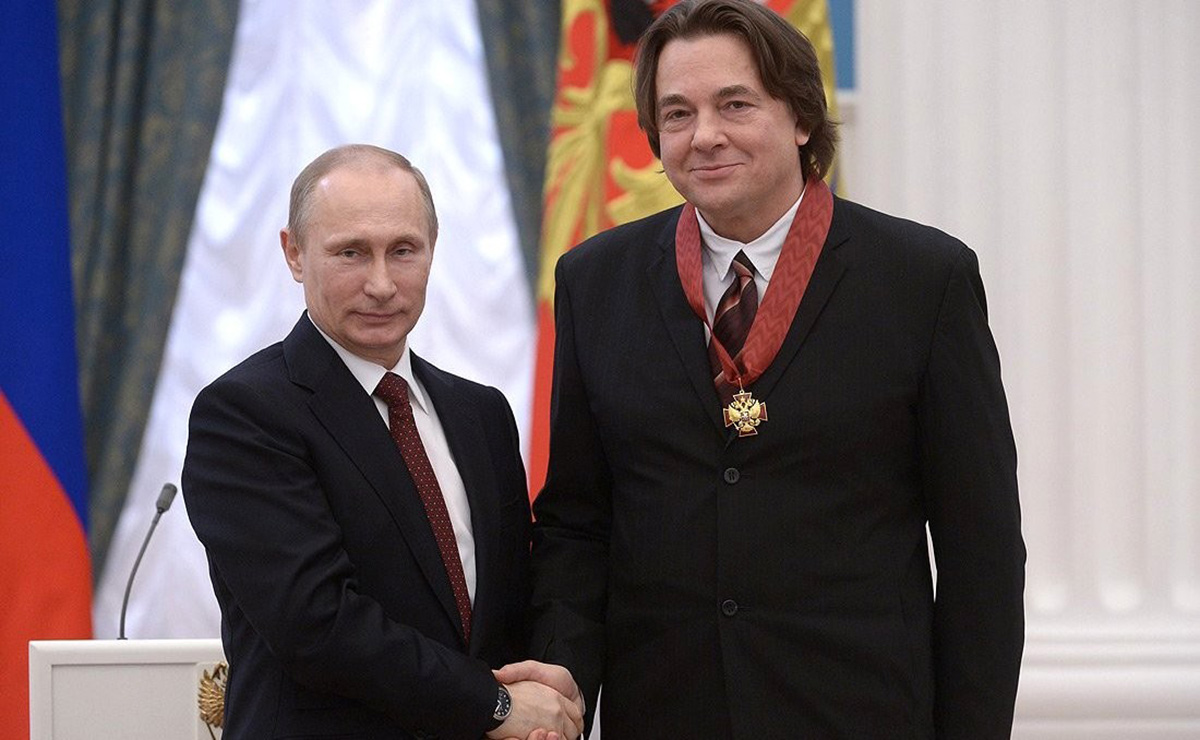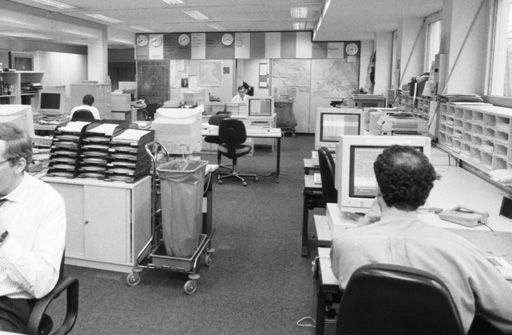|
Belarus-2
Belarus 2 () is a state-owned television channel in Belarus. It is an educational and entertainment TV channel created in 2003 by Belteleradiocompany, which until 2011 carried the name LAD (). The channel broadcasts in both Belarusian and Russian languages. History LAD was launched as Belteleradio's second television channel, in opposition to ONT, while established as a ''de facto'' second television network, upon its creation, it was considered as separate from the BTRC. In late 2002, BTRC started planning the creation of a second television network - the third network overall - under the tentative name Spadchyna (, Heritage). The initiative behind the name of the channel was not up to Belteleradio. The name Lad eventually won and was selected for the new network. The channel's launch was announced in September 2003, scheduled to launch the following month. It was positioned as a "family channel" with the aim of its viewers being united by "universal traditional values: family ... [...More Info...] [...Related Items...] OR: [Wikipedia] [Google] [Baidu] |
National State Television And Radio Company Of The Republic Of Belarus
The National State TV and Radio Company of the Republic of Belarus (; ), known as Belteleradiocompany (; ) or simply Belteleradio, is the state television and radio broadcasting service in Belarus. From 1993 until 2021, it was a full active member of the European Broadcasting Union (EBU) under the name Belarusian Television and Radio Company (BTRC). In May 2021, the EBU Executive Board agreed to suspend BTRC as a member of the broadcasting union effective 11 June 2021. The broadcaster later іndіcated that the suspension would expire in 2024, but this was later denied by the EBU a couple months prior to when the suspension hypothetically would have been lifted as they publicly addressed that they had "no reason" to reinstate BTRC's membership "at the current time". This means that BTRC's membership is indefinitely suspended, and as a result cannot rejoin the organisation. Until the suspension is lifted or another Belarusian member joins in its place, there are presently no member ... [...More Info...] [...Related Items...] OR: [Wikipedia] [Google] [Baidu] |
Belarus-1
Belarus 1 () is a state-owned television channel in Belarus. It is the oldest television channel in the country. The channel is on air from 6:00 am to 2:00 am on the next day, in contrast with most public channels in Europe, which broadcast 24-hour programming. It is used to spread propaganda in Belarus. History The channel was launched on 1 January 1956, as the Belarusian branch of the Soviet Central Television, after months of preparation. The first spoken words were "Good evening! Happy New Year. Today, we start our test run." spoken by Tamara Bastun. Broadcasts were initially running for 2–3 hours every evening on Thursdays, Fridays and Saturdays. In the 1960s, two-program television was formed (based on the broadcasts of the First Program of Moscow Central Television). Since the mid-60s, its own production of feature and documentary television films began (based on the main editorial office of "Telefilm"). In 1962, with the release of Intervision Network, an exchange of ... [...More Info...] [...Related Items...] OR: [Wikipedia] [Google] [Baidu] |
Belarus 24
Belarus 24 () is the state television and radio channel of Belarus. It was launched on 1 February 2005. It broadcasts primarily in Russian language programmes of other Belarusian state TV channels Belarus 1, Belarus-2, Belarus 3 and Belarus 5. On 1 January 2013, Belarus TV was renamed Belarus 24. On 10 June 2021 the channel was banned in Ukraine for allegedly inciting hostility and spreading misinformation about Ukraine.The Belarusian state TV channel has been banned in Ukraine Ukrayinska Pravda
''Ukrainska Pravda'' is a Ukrainian socio-political online media outlet founded by Heorhii Gongadze in April 2000. Af ...
[...More Info...] [...Related Items...] OR: [Wikipedia] [Google] [Baidu] |
1080i
In high-definition television (HDTV) and video display technology, 1080i is a video display format with 1080 lines of vertical resolution and Interlaced video, interlaced scanning method. This format was once a standard in HDTV. It was particularly used for broadcast television because it can deliver high-resolution images without needing excessive bandwidth. This format is used in the SMPTE 292M standard. Definition The number "1080" in 1080i refers to the number of horizontal lines that make up the vertical resolution of the display. Each of these lines contributes to the overall detail and clarity of the image. The letter "i" stands for Interlaced video, interlaced. This is a technique where the image is not displayed all at once. Instead, the frame is split into two fields. One field contains the odd-numbered lines, and the other field contains the even-numbered lines. These fields are displayed in rapid succession, giving the appearance of a full image to the human eye. The ... [...More Info...] [...Related Items...] OR: [Wikipedia] [Google] [Baidu] |
Russia-1
Russia-1 () is a state-owned Russian television channel, first aired on 14 February 1956 as Programme Two in the Soviet Union. It was relaunched as RTR on 13 May 1991, and is known today as Russia-1. It is the flagship channel of the All-Russia State Television and Radio Broadcasting Company (VGTRK).Alexei Bessudnov, "Media Map" (183–189), ''Index on Censorship'', Volume 37, Number 1, 2008, p. 184. In 2008 Russia-1 had the second largest audience in Russian television. In a typical week, it was viewed by 75% of urban Russians, compared to 83% for the leading channel, Channel One. The two channels are similar in their politics, and they compete directly in entertainment. Russia-1 has many regional variations and broadcasts in many languages. History Soviet period Russia-1 started broadcasting as The Second Moscow Programme (Programme Two) in 1956. From the very start, it only hosted programs produced by the Ministry of Education of the Soviet Union, as well as children's progr ... [...More Info...] [...Related Items...] OR: [Wikipedia] [Google] [Baidu] |
Channel One Russia
Channel One ( rus, Первый канал, r=Pervý kanal, p=ˈpʲervɨj kɐˈnal, t=First Channel) is a Russian Television in Russia, federal television channel. Its headquarters are located at Ostankino Technical Center near the Ostankino Tower in Moscow. The majority of its shares are owned or indirectly controlled by the state. It was created by decree of Russian president Boris Yeltsin to replace Ostankino Television Channel One, which in turn replaced Programme One in 1991. From April 1995 to September 2002, the channel was known as Public Russian Television (, ORT ). The main news programmes are ''Vremya'' and ''Novosti (TV program), Novosti''. Channel One's main competitors are the Russia-1 and NTV (Russia), NTV channels. The channel has 2,443 employees as of 2015. History When the Soviet Union was abolished, the Russian Federation took over most of its structures and institutions. One of the first acts of Boris Yeltsin's new government was to sign a Decree of the ... [...More Info...] [...Related Items...] OR: [Wikipedia] [Google] [Baidu] |
VGTRK
The Russian Television and Radio Broadcasting Company (RTR) or Russian Television and Radio Broadcasting Company, also known as Russia Television and Radio, is a national state-owned broadcaster which operates many television and radio channels. The company was founded in 1990 and is based in Moscow. The broadcasting of nation-wide TV and radio channels is located in Moscow, and also via the regional transmitting centres of the Russian Television and Radio Broadcasting Network forming the terrestrial transmitting network. TV and radio channels from Moscow are delivered to the regions via satellite and terrestrial communication channels. Regional programmes are produced in regional production studios. In December 2019, the VGTRK media holding company reported that it broadcasts its programs in 54 languages spoken in Russia including from local studios, up from 53 languages in 2010. It includes even critically endangered Nganasan language of traditionally a semi-nomadic people ... [...More Info...] [...Related Items...] OR: [Wikipedia] [Google] [Baidu] |
STS (TV Channel)
CTC (or , stands for , , lit. 'Network of television stations' (NTS)) is a commercial television station based in Moscow, Russia. It belongs to the CTC Media company. The company is owned by National media group (Russia) and VTB Bank (Russia). History 1996—2002: Early Years of Broadcasting The STS television network was founded by United States, American entrepreneur Peter Gerwe, who was the first in the Russian market to propose a franchised network broadcasting model. In this model, independent affiliate broadcasters were responsible for distributing the television signal in the regions, receiving a portion of the channel's advertising time in exchange for their services. The idea of creating such a television network had been nurtured by the company StoryFirst Communications since 1993. On December 1, 1996 in television, 1996, the Moscow UHF channel AMTV, the St. Petersburg-based "STS-Petersburg, Sixth Channel", the Nizhny Novgorod-based "Nika TV", the Kazan-based "Cha ... [...More Info...] [...Related Items...] OR: [Wikipedia] [Google] [Baidu] |
Okna (TV Series)
''Okna'' (Russian ''Окна'' - ''The Windows'' in English) was a Russian television tabloid talk show, hosted by Dmitry Nagiyev. ''Okna'' is ostensibly a talk show where troubled or dysfunctional families come to discuss their problems before a studio audience so that the audience or host can offer suggestions on what can be done to resolve their situations. There were lots of fighting and offensive language in show. The show has become very popular on Russian television. It received attention in the UK after a fight was televised on '' Tarrant On TV'', which has also led to its popularity growing on the internet via YouTube YouTube is an American social media and online video sharing platform owned by Google. YouTube was founded on February 14, 2005, by Steve Chen, Chad Hurley, and Jawed Karim who were three former employees of PayPal. Headquartered in .... References STS (TV channel) original programming TNT (Russian TV channel) original programming 200 ... [...More Info...] [...Related Items...] OR: [Wikipedia] [Google] [Baidu] |
Radio Free Europe
Radio Free Europe/Radio Liberty (RFE/RL) is a media organization broadcasting news and analyses in 27 languages to 23 countries across Eastern Europe, Central Asia, the Caucasus, and the Middle East. Headquartered in Prague since 1995, RFE/RL operates 21 local bureaus with over 500 core staff, 1,300 freelancers, and 680 employees. Nicola Careem serves as the editor-in-chief. Founded during the Cold War, RFE began in 1949 targeting Soviet empire, Soviet satellite states, while RL, established in 1951, focused on the Soviet Union. Initially funded covertly by the Central Intelligence Agency, CIA until 1972, the two merged in 1976. RFE/RL was headquartered in Munich from 1949 to 1995, with additional broadcasts from Portugal's Glória do Ribatejo until 1996. Soviet authorities jammed their signals, and Second World, communist regimes often infiltrated their operations. Today, RFE/RL is a private 501(c)(3) corporation supervised by the United States Agency for Global Media, which ... [...More Info...] [...Related Items...] OR: [Wikipedia] [Google] [Baidu] |


